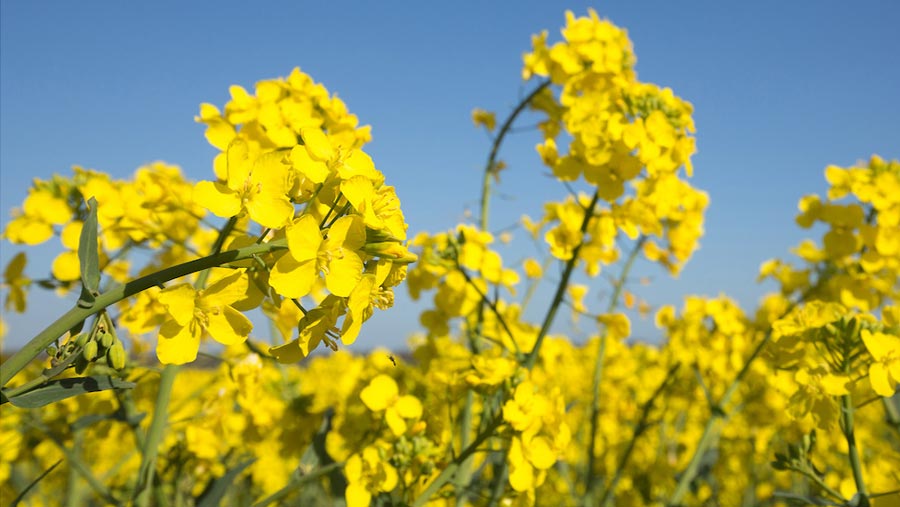Britain’s oilseed rape area shrinks to 13-year low
 © Tim Scrivener
© Tim Scrivener Britain’s oilseed rape area has fallen for the fifth consecutive season, resulting in the lowest area in 13 years, according to a survey.
The 2017 rapeseed area is predicted at 557,000ha, which is 4% lower than Defra’s estimate of the 2016 area.
See also: Beans favoured as replacement for drought-hit oilseed rape
This is based on the results of the AHDB Early Bird Survey of growers, which offers a snapshot of actual plantings as well as cropping intentions over the coming months.
Regional differences
Commenting on the figures, Millie Askew, AHDB Cereals and Oilseeds analyst, pointed to the contrasting regional differences for oilseed rape.
“For instance, there has been a dramatic decrease in the east of the country, a 28% decline attributed to cabbage stem flea beetle damage and a lack of moisture that made establishment very difficult.”
In fact, some rape crops have been ripped up.
However, in other areas of the country (the Midlands, South and Scotland), the area sown to oilseed rape actually increased.
“The increase in these areas is likely due to the rise in oilseed prices, making oilseed rape an attractive break crop in areas of the country where the conditions are right,” Ms Askew said.
Cereals
Moving to wheat, the combined winter and spring area is predicted to fall 1% on last year to 1.8m ha, down 4% on the five-year average.
Ms Askew suggested grassweed challenges were the main limiting factor on many farms and could be to blame for the decrease.
Results from the survey also show Great Britain may be on track for the second-largest spring barley crop since 1997, behind 2013, which was driven by poor conditions in the previous autumn.
Following the trend of recent years, the area planted to spring barley continues to rise and is predicted to be 17% higher for harvest 2017 than harvest 2016 at 799,000ha.
Ms Askew said the survey suggests this increase is in areas of GB most affected by blackgrass.
Estimated crop areas for harvest 2017
- Winter and spring wheat down 1% to 1.8m ha – 4% down on the five-year average
- Winter barley to fall 10% to 397,000ha
- Oats area predicted to fall 8% to 130,000ha
- Oilseed rape area down 4% overall to 557,000ha
- Pulses are down 6% to 216,000ha – but still well above the five-year average
“Some farmers will have been influenced by poor winter barley yields for 2016. However, it is possible that if the price of wheat continues to rise above barley, some of this area could be sown to spring wheat instead of barley.”
Data for the Early Bird Survey was taken from 262,500ha of arable land across the whole of GB, and was carried out by the Andersons Centre and the Association of Independent Crop Consultants.
Ms Askew stressed that the survey only represents a snapshot of both actual plantings and more tentative intentions at a given point in time, therefore, intentions may change depending on number of factors, such as weather and changes in crop margins.

